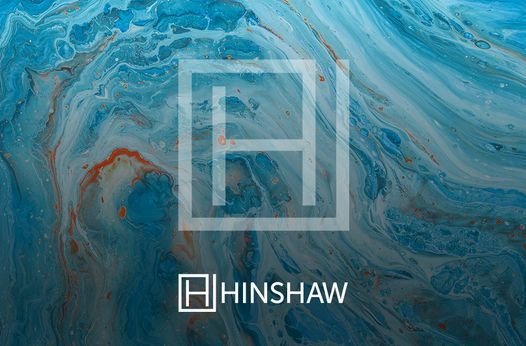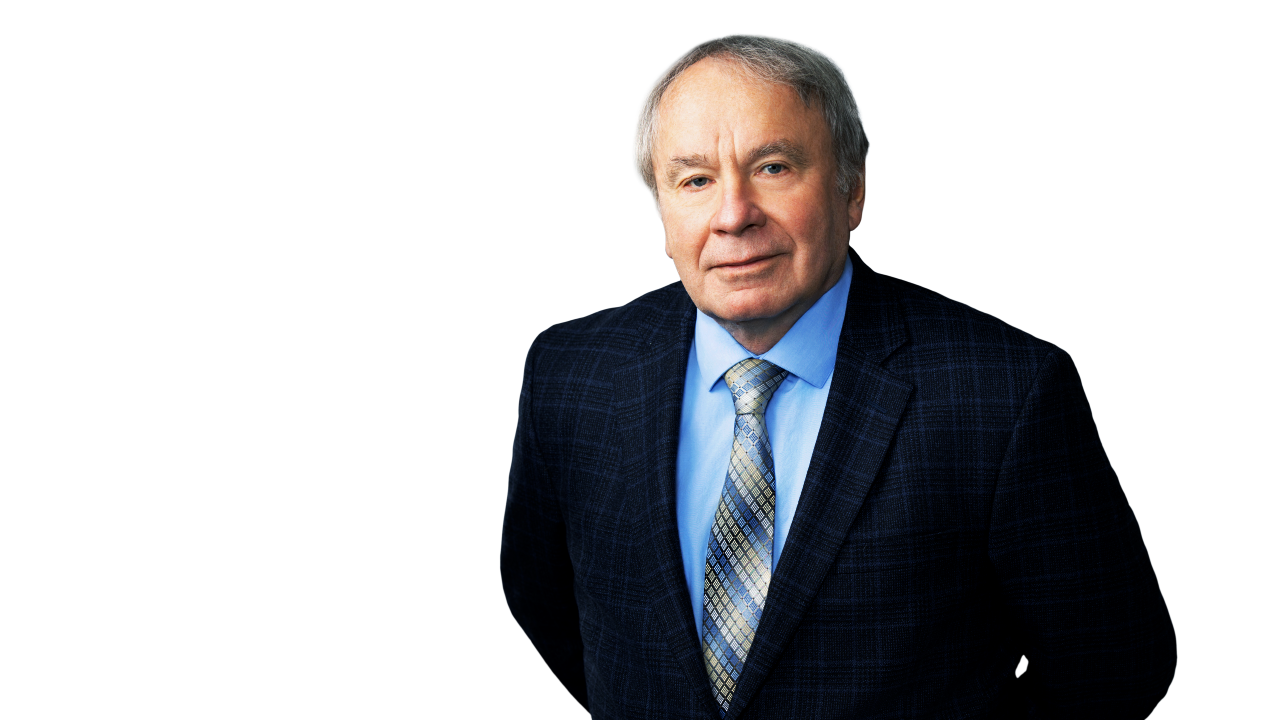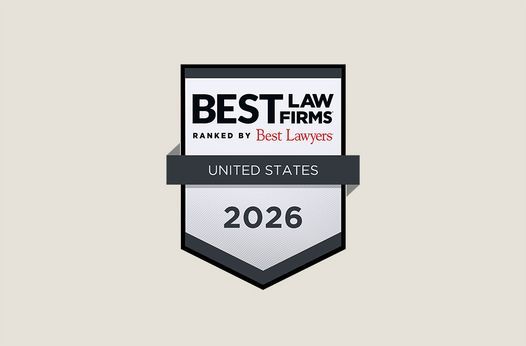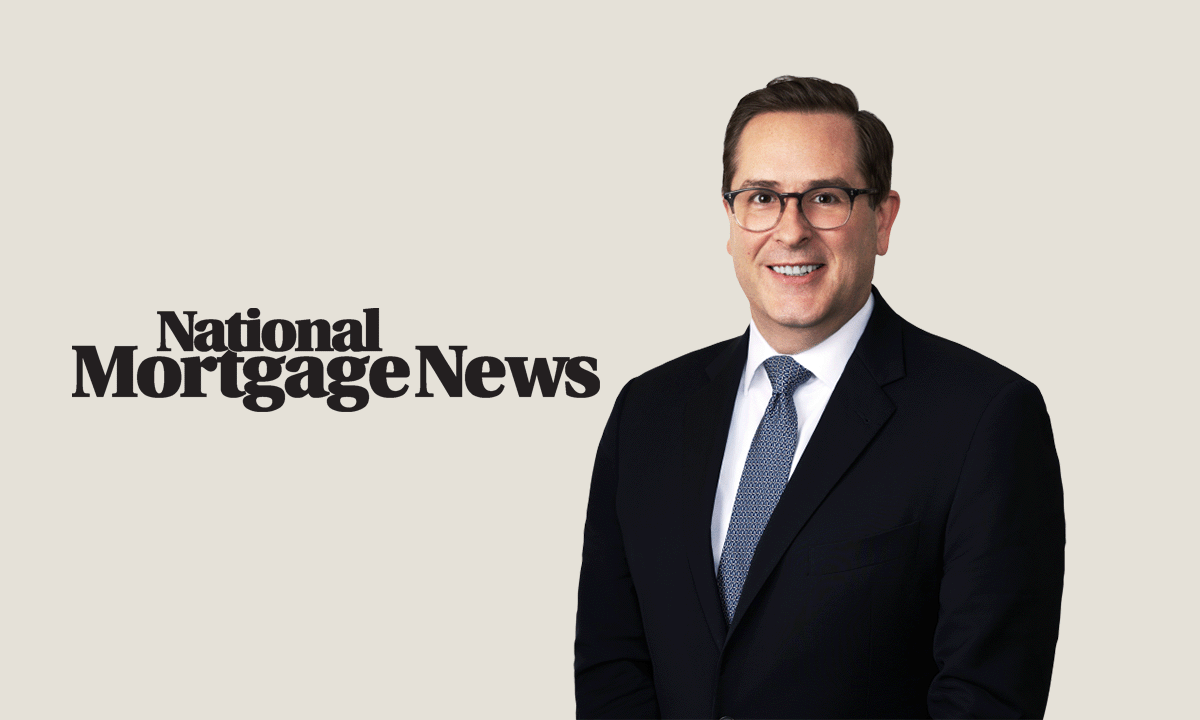Important New Guidance for the Paycheck Protection Program, Main Street Lending Facilities, and Economic Injury Disaster Loan Program
Hinshaw Alert | 10+ min read
Apr 10, 2020
The CARES Act established the Paycheck Protection Program ("PPP" or "Program"), which provides nearly $350 billion in forgivable loans designed to keep workers employed during the COVID-19 crisis. In this alert, we are reviewing the PPP interim rules along with recently issued guidance regarding implementation of the PPP, new guidance on two Main Street Lending Facilities created by the Federal Reserve, and details on the Economic Injury Disaster Loan Program (EIDL).
Paycheck Protection Program
The Interim Final Rules for the PPP were issued by the Small Business Administration (SBA) on April 2, 2020. On April 7, 2020, the SBA issued an FAQ that provided additional guidance on interpreting the provisions of the PPP. This FAQ was amended on April 8th and a second FAQ was issued on that date discussing the participation of faith-based organizations in the Program and the EIDL.
PPP Lenders
Any federally insured depository institution that is not an SBA 7(a) lender may participate in the PPP by submitting to the SBA the CARES Act Section 1102 Lender Agreement (SBA Form 3506).
Lender Underwriting Obligations
To satisfy its underwriting obligations, each bank lender must:
- Confirm receipt of the borrower's certifications contained in the borrower's Program application;
- Confirm receipt of information demonstrating that the borrower had employees for whom the borrower paid salaries and payroll taxes as of February 15, 2020;
- Confirm the dollar amount of monthly payroll costs for the borrower for 2019 or the preceding twelve months by reviewing payroll information provided by the borrower;
- Comply with its Bank Secrecy Act protocols; and
- Review the borrower's Program application.
The lender is expected to perform a good faith review in a reasonable time of the information submitted by the loan applicant. If the lender identifies errors or material lack of substantiation, it should work with the applicant to correct the problems.
The lender must make the first disbursement of the loan proceeds within ten days of the SBA's approval of the loan.
Applicant Documentation
As part of the review of the PPP application, the lender should secure the following documents covering 2019 or the preceding twelve months for applicants that have employees:
- IRS Form 941 (quarterly wages);
- IRS Form 843 (941 annualized);
- IRS Form W-3;
- IRS Form 940 for unemployment costs; and
- Monthly payroll statements providing the following:
- Salary, wages, commissions, or tips (not exceeding $100,000 for each employee);
- Costs for vacation, parental, family, medical, or sick leave;
- Costs for the separation or dismissal of employees; and
- State and local taxes assessed on employee compensation.
Lender, SBA, and Agent Fees
Lenders will receive the following fees:
- 5% for loans of no more than $350,000;
- 3% for loans of more than $350,000 and less than $2,000,000; and
- 1% for loans of at least $2,000,000.
As to SBA fees, none of the following fees will apply to PPP loans:
- Up-front fee payable by the borrower to the SBA;
- Lender's annual service fee payable to the SBA;
- Subsidy recoupment fee; and
- Fee payable to the SBA for any guarantee sold into the secondary market.
Agents who assist borrowers will receive fees from the lender as follows:
- 1% of loans of not more than $350,000;
- .5% of loans of more than $350,000 and less than $2,000,000; and
- .25% of loans of at least $2,000,000.
Capital Treatment
PPP loans will receive a 0% risk weight under the lender's risk-based capital requirements.
Eligible Businesses
The following are eligible to participate in the PPP:
- Businesses with fewer than 500 employees;
- Businesses with NAICS Code 72, such as restaurants and hotels, who can have up to 500 employees per location;
- Nonprofit (501(c)(3)) organizations, veterans' organizations (501(c)(19)), and tribal business concerns with fewer than 500 employees;
- Sole proprietorships and independent contractors; and
- Businesses that meet the SBA's alternative size standard as of March 27, 2020:
- With a maximum tangible net worth of not more than $15 million; and
- Average net income after federal income taxes (excluding any carryover losses for the two fiscal years before the date of the application) is not more than $5 million.
When undertaking employee headcount, the loan applicant must count all part-time and full-time employees—including temporary employees. It is not the responsibility of the lender to determine the employee headcount.
Affiliates
A business must include the employees or receipts of affiliates when determining whether the business may participate in the Program.
A business is affiliated with another if either controls the other. Control may exist through (i) common ownership, (ii) management interlocks, (iii) affiliations arising under stock options, convertible securities and agreements to merge, and (iv) identity of interest. The CARES Act, except as indicated below, follows the SBA affiliation rules found at 13 CFR Section 121.103.
Under the CARES Act, the affiliation rules are waived for (i) businesses within NAICS Code 72—businesses like hotels and restaurants with 500 or fewer employees; (ii) franchises with codes assigned by the SBA; and (iii) businesses that receive financial assistance from SBICs.
It is not the responsibility of the lender to determine which entities might be affiliates of the applicant.
Ineligible Businesses
Certain businesses are ineligible to participate in the Program even if they fit within one of the categories listed above. These include:
- The business is engaged in business that is illegal under federal, state, or local law, e.g., cannabis-related businesses, such as cannabis vendors;
- An owner of 20% or more of the business is incarcerated, on probation, on parole; presently subject to indictment, criminal information, arraignment, or other means by which formal charges are brought in any jurisdiction, or has been convicted of a felony within the last five years; and
- The business or the owner thereof is currently delinquent or has defaulted within the last seven years on a loan guaranteed by the SBA, or any other federal agency, that caused a loss to the government.
There are 18 categories of businesses that are ineligible to participate in the SBA programs, including the PPP. For further information, loan applicants should consult Chapter 2, Section III of the SBAs Lender and Development Company Loan Programs (SOP 50 20 5(K)).
Loan Applications
It is incumbent upon the applicant to carefully review the application. When completing an application, an applicant must certify, among other things, that:
- Current economic uncertainty makes the loan request necessary to support the ongoing operations of the applicant;
- Funds will be used to retain workers and maintain payroll or make mortgage interest payments, lease payments and utility payments;
- Not more than 25% of the funds will be used for nonpayroll costs; and
- Documentation verifying the number of full-time equivalent employees on payroll as well as the dollar amounts of payroll costs, covered mortgage interest, covered lease payments and coverer utility payments for the eight week period following the date the loan proceeds were first disbursed to the borrower by the lender will be provided to the lender so the lender can determine if any or all of the loan can be forgiven.
The last bullet point relates to the documentation needed to support the forgiveness of all or part of the loan as discussed below.
Applicants should note that they are signing and delivering a loan application to an agency of the federal government. The filing of a fraudulent application could subject the applicant to fines and criminal penalties.
The SBA will direct any borrower who uses Program funds for unauthorized purposes to repay these funds. The SBA may pursue an applicant—and its principals—who knowingly use proceeds for unauthorized purposes.
Loan Terms
Loan terms are as follows:
- SBA will guarantee 100% of the loan;
- No collateral or personal guarantees will be required;
- The amount of the loan will be 2.5 times the borrower's average monthly payroll costs for 2019 or the preceding twelve months (as discussed below);
- Loans are capped at $10 million;
- The interest rate will be 1%;
- The loans will mature in 2 years;
- There is no prepayment penalty; and
- No payments will be due for the first 6 months, but interest will accrue.
- The SBA is expected to issue further guidance on this deferment.
Payroll Costs
Payroll costs include salary, commissions, tips, vacation pay, and family, medical, and paid sick leave. However, qualified sick and family wages for which a credit is allowed under Sections 7001 and 7003 of the Families First Coronavirus Response Act (FFCRA) are excluded.
All compensation over $100,000 to an employee making more than $100,000 is excluded, but benefits like health care costs and contributions to retirement plans may be included for such employees. In addition, guaranteed payments and owner distributions that are subject to the self-employment tax for actively participating partners, and members of partnerships and LLCs, should be included up to $100,000 for each such person.
Under the CARES Act, payroll costs are calculated on a gross basis without regard to (i.e., not including subtractions or additions based on) federal taxes imposed or withheld, such as the employee's and employer's share of FICA and income taxes required to be withheld from employees. As a result, payroll costs are not reduced by taxes imposed on an employee and required to be withheld by the employer, but payroll costs do not include the employer's share of payroll tax. For example, an employee who earned $4,000 per month in gross wages—from which $500 in federal taxes was withheld—would count as $4,000 in payroll costs. The employee would receive $3,500, and $500 would be paid to the federal government. However, the employer-side federal payroll taxes imposed on the $4,000 in wages are excluded from payroll costs.
Loan Forgiveness
The loan can be forgiven in whole or in part. The amount to be forgiven is equal to the amount spent during the 8 week period following the first disbursement of the loan proceeds to the borrower (the "Covered Period") on (i) payroll costs, (ii) interest payments on mortgages incurred before February 15, 2020, (iii) rent payments on leases in effect before February 15, 2020, and (iv) utility payments for which service began before February 15, 2020. The lender must make the first disbursement of the loan proceeds within ten days of the SBA's approval.
The maximum amount of loan forgiveness for non-payroll expenses is 25% of the amount of the loan. Eligible payroll costs include compensation up to $100,000 in prorated wages, per employee. Aggregate payroll costs must not exceed payroll costs incurred during the equivalent eight week period for the previous year, proportionate to the number of employees.
The amount of loan forgiveness is reduced by:
- Any reduction in the ratio of (1) the average number of monthly full-time equivalent (FTE) employees during the Covered Period; versus (2) those employed during either of two reference periods: February 15 to June 30, 2019; or January 1 to February 29, 2020 (each a "Reference Period"); plus
- The amount of any reduction in total salary or wages of any employee during the Covered Period in excess of 25% of the total wages and salary of the employee during the most recent full quarter during which the employee was employed—taking into account only employees whose annualized salary was less than $100,000.
To encourage employers to rehire workers laid off due to the COVID-19 crisis, borrowers who rehire laid off workers by June 30, 2020, will not be penalized for having a reduced payroll at the start of the period.
A borrower seeking loan forgiveness must submit to the lender an application, which must include:
- Documentation verifying the number of full-time equivalent employees on payroll and pay rates for the Covered Period and the selected Reference Period described in subsection (d), including:
- Payroll tax filings reported to the IRS; and
- State income, payroll, and unemployment insurance filings;
- Documentation, including cancelled checks, payment receipts, transcripts of accounts, or other documents verifying payments on covered mortgage obligations, payments on covered lease obligations, and covered utility payments;
- A certification from a representative of the borrower authorized to make such certifications that:
- The documentation presented is true and correct; and
- The amount for which forgiveness is requested was used to retain employees, make interest payments on a covered mortgage obligation, make payments on a covered rent obligation, or make covered utility payments; and
- Any other documentation the SBA determines necessary.
The lender must make a decision on loan forgiveness within 60 days of the lender's receipt of the forgiveness application.
No borrower shall receive forgiveness without submitting to the lender the documentation described above.
For the borrower, the forgiven amount is not taxable income.
There are two ways lenders may be reimbursed for forgiven amounts:
- After a lender makes a formal determination on a forgiveness application and processes the forgiveness payment, the SBA must pay the lender 100% of the forgiven amount within 90 days of the date of forgiveness (with interest from the date of forgiveness through the date of payment).
- A lender may request that the SBA purchase the expected forgiveness amount of a PPP loan, or a pool of PPP loans, at the end of the seventh week (of the origination of the PPP loans in question. The SBA must purchase the forgiveness amounts within 15 days of the request.
If a lender has received the required documentation from a borrower attesting that the borrower has accurately verified the payments for payroll costs, payments on covered mortgage obligations, payments on covered lease obligations, or covered utility payments during covered period:
- an enforcement action may not be taken against the lender relating to loan forgiveness for the payments for payroll costs, payments on covered mortgage obligations, payments on covered lease obligations, or covered utility payments, as the case may be; and
- (ii) the lender shall not be subject to any penalties by the SBA relating to loan forgiveness for the payments for payroll costs, payments on covered mortgage obligations, payments on covered lease obligations, or covered utility payments, as the case may be.
Application Filing Deadline
Loan applications must be filed by June 30, 2020 but applications should be filed as soon as possible.
Main Street Lending Facilities
The CARES Act instructs the Secretary of the Treasury to encourage the Federal Reserve to establish a program of low interest loans to borrowers with between 500 and 10,000 employees. The Federal Reserve issued guidance for this program on April 9th.
The Federal Reserve has established two Main Street Lending Facilities. One facility will purchase from eligible lenders eligible loans made to eligible borrowers which are made on or after April 8, 2020. The second facility will purchase from eligible lenders tranches of eligible loans made to eligible borrowers on loans originated before April 8, 2020.
Hinshaw will be publishing a detailed client alert on these two programs.
The CARES Act includes a number of requirements that must be satisfied if the employer desires to participate in the program including:
- The loan funds must be used to retain at least 90% of the employees, at full pay and benefits, until September 30, 2020;
- The employer must intend to restore no less than 90% of its employees who were employed on February 1, 2020 and to restore all pay and benefits to the employees no later than four months after the termination of the COVID-19 crisis;
- No stock buybacks while the loan is outstanding and for 12 months after the end of the loan;
- All loans must be fully secured by the assts of the borrower;
- No dividends while the loan is outstanding and 12 months following the termination of the loan; and
- Executive compensation must be limited.
Economic Injury Disaster Loan Program
Under the EIDL, the SBA has been authorized to provide funding to small businesses impacted by the COVID-19 crisis. All states have been approved to participate in the program.
The program permits the SBA to make low interest, fixed loans of up to $2 million to a small business (at 3.75%) or non-profit (at 2.75%) for up to 30 years, depending on the circumstances of the borrower. Loan proceeds cannot be used to pay off or consolidate debt. Additionally, owners will have to pledge collateral to secure all loans in excess of $25,000. No personal guarantee will be required unless the loan exceeds $200,000.
Loans may be made to independent contractors, the self-employed, sole proprietorships, and businesses with fewer than 500 employees.
A company must be without any other available credit. Further, it must be unable to meet its obligations and pay its operating expenses.
The deadline to submit applications is December 21, 2020. Applications can be filed online or by mail. The approval process will take a minimum of 21 days. Emergency grants of up to $10,000 will be made within days of the filing of an application.
Businesses looking to secure a loan under the EIDL should apply as soon as possible. In addition to the 21 day minimum waiting period, thousands of companies have already applied for EIDL loans.
Additional information about this SBA program may be found on the SBA's website.
Related People
Related Capabilities
Featured Insights

Employment Law Observer
Dec 8, 2025
12 Days of California Labor and Employment: 2025 Year in Review

Press Release
Dec 4, 2025
Hinshaw Recognized by the Leadership Council for Legal Diversity as a 2025 Top Performer

Press Release
Nov 25, 2025
Hinshaw Legal Team Secures Summary Judgment in Gas Station Injury Case

Press Release
Nov 18, 2025
Hinshaw Releases the Third Edition of Duty to Defend: A Fifty-State Survey

In The News
Nov 13, 2025
A Profile on Neil Rollnick: After 57 Years in Practice, He Has No Plans to Retire

Press Release
Oct 22, 2025
Hinshaw & Culbertson LLP Launches New Website and Refreshed Brand







